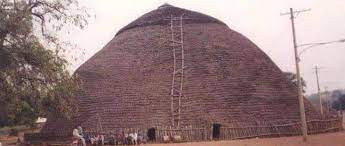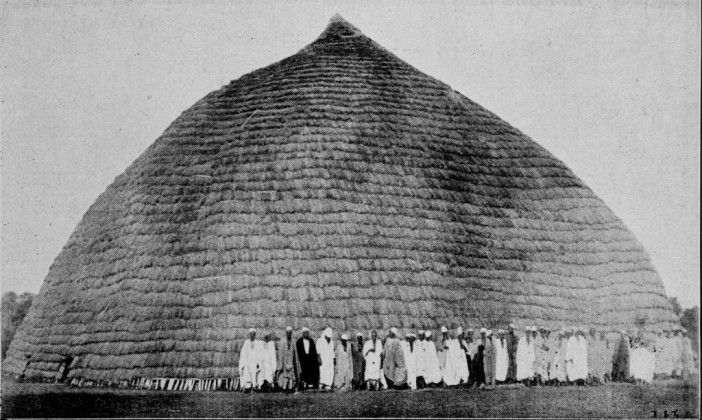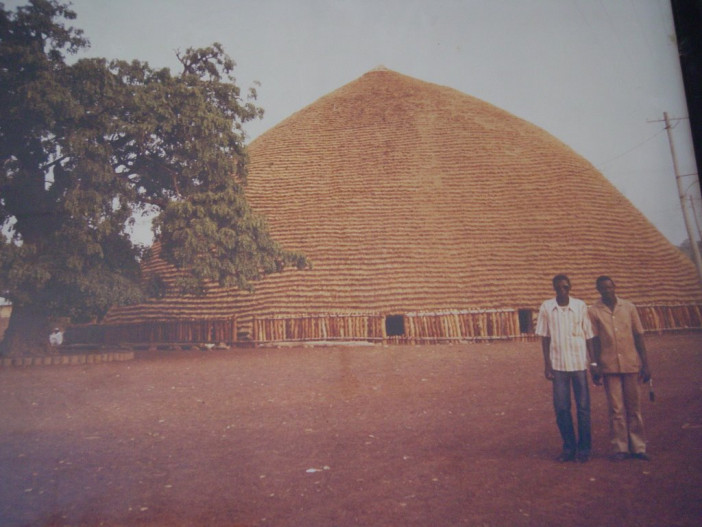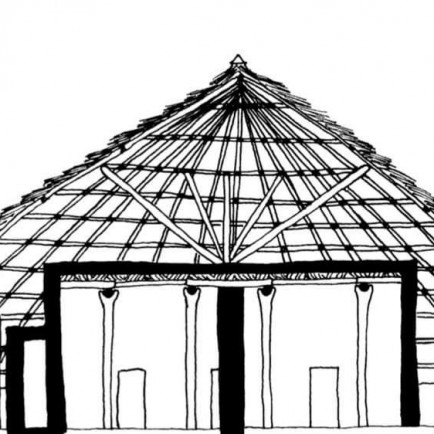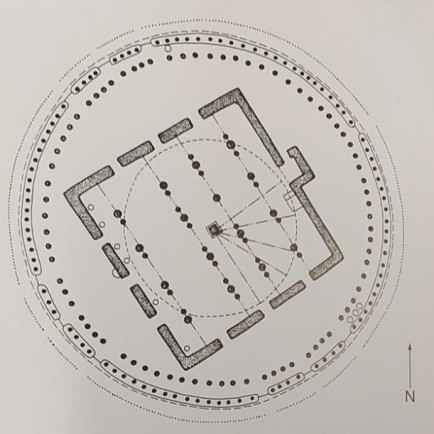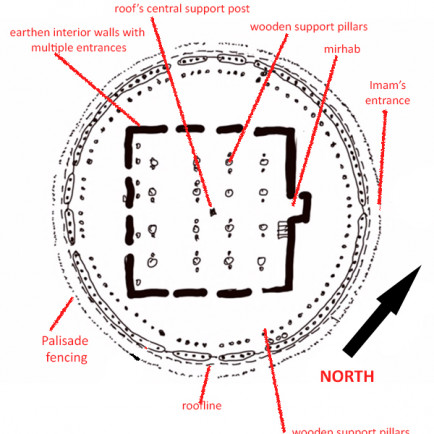The Dinguiraye mosque
History
Built in the 1840s under Omar Saidou Tall, founder of the Toucouleur Empire.
Urban and Architectural
The architecture of the Fouta Djallon mosques is decidedly square in plan, based on the Kaʾba model as encouraged by the Maliki school of Islam followed throughout West Africa. The Friday Mosque in Dinguiraye, Guinea, is the largest and most spectacular example of this type. The plan uses triple entrances on the north, west and south sides. A mihrab niche on the east side indicating the qibla completes the composition.
A large central pillar, flanked by numerous smaller wooden posts dividing the interior floor plan into rows and aisles, supports the earthen ceiling. The central pillar supports above it a collection of wooden poles in the shape of an inverted umbrella radiating from and supporting a massive thatched domed roof that protects the earth cube below. Such a support system for the roof is not necessary in ordinary residential architecture due to the smaller covered space, but here it is necessary to prevent the rafters from tilting. The eaves extend to a circle of short wooden posts planted in a circular plane around the inner cube, masking the interior in deep, dark shadows.
The Dinguiraye mosque can therefore be characterized as a circular plan roof centered on the central pillar of a square plan building.
Description
References
https://human.libretexts.org/Bookshelves/Art/Book%3A_The_Bright_Continent_-_African_Art_History_(Curnow)/04%3A_The_Impact_of_Religion_and_Hierarchy_on_African_Art/4.3%3A_Islam_and_Art
Details
Location
Guinea
Worshippers
250
Owners
Omar Saidou Tall, founder of the Toucouleur Empire
Year of Build
1840
Area
500
Drawings
Map
History
Built in the 1840s under Omar Saidou Tall, founder of the Toucouleur Empire.
Urban and Architectural
The architecture of the Fouta Djallon mosques is decidedly square in plan, based on the Kaʾba model as encouraged by the Maliki school of Islam followed throughout West Africa. The Friday Mosque in Dinguiraye, Guinea, is the largest and most spectacular example of this type. The plan uses triple entrances on the north, west and south sides. A mihrab niche on the east side indicating the qibla completes the composition.
A large central pillar, flanked by numerous smaller wooden posts dividing the interior floor plan into rows and aisles, supports the earthen ceiling. The central pillar supports above it a collection of wooden poles in the shape of an inverted umbrella radiating from and supporting a massive thatched domed roof that protects the earth cube below. Such a support system for the roof is not necessary in ordinary residential architecture due to the smaller covered space, but here it is necessary to prevent the rafters from tilting. The eaves extend to a circle of short wooden posts planted in a circular plane around the inner cube, masking the interior in deep, dark shadows.
The Dinguiraye mosque can therefore be characterized as a circular plan roof centered on the central pillar of a square plan building.
Description


